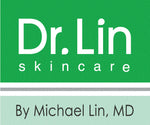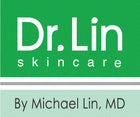Light Sheer Laser
The most frequent cosmetic use of lasers for the skin is for permanent reduction of hair growth. Besides the obvious, reduction in hair growth may also improve some skin conditions such as ingrown hairs and folliculitis – an acne-like eruption. The LIGHTSheer® hair removal laser was FDA approved in 1998.
What is laser hair removal?
It is the procedure in which laser light is used to alter the hair follicle in order to diminish or prevent future hair growth.
How is it performed?
A beam of light from the laser is directed onto the skin where there is unwanted hair growth. Melanin (the pigment in the hair) absorbs the light and converts it to heat. This heat then inactivates the surrounding hair follicle.
How many treatments are required?
At least several treatments of laser hair removal are required. This is because the laser only targets those follicles that are in their active hair growth phase, known as Anagen. If a follicle is in one of its dormant phases, known as Telogen or Catagen, the hair follicles will not be affected. These phases of hair growth are illustrated in the diagram below. In most sites (arm, thigh, leg, bikini line), only 20% to 40% of the hair follicles are in their Anagen phase at any one time. Subsequent laser treatments are required when those follicles, which were in their Telogen or Catagen phase during a previous treatment, have transitioned into their Anagen phase becoming susceptible to the laser light. Other factors that affect the number of laser hair removal treatments include the location on the body, hair color, hair caliber and skin color.
How often are treatments administered?
Laser hair removal is performed approximately every month. This is sufficient time for many of the resting Telogen and Catagen hair follicles to begin their active Anagen hair growth phase.
Who can be treated?
Because melanin in the hair shaft is the actual target that absorbs the laser light, the procedure works best for those with dark hairs – white, silver, blonde and gray hairs respond poorly. In addition, thick hairs respond better than fine hairs. Besides hair color, the other important variable is skin color: The lighter the skin color, the more effective the results and the fewer treatments that may be required. If the complexion is too dark, permanent hair reduction may not be achieved. Some lasers are safer than others for treating dark skin – however, they even those that are safe on dark skin may not provide permanent reduction in hair growth. While some lasers are promoted for the permanent reduction in white, gray and silver hairs – in reality, the results are not consistent and usually these hairs persist in spite of treatment.
Besides the obvious, is there any additional benefit to laser hair removal?
Yes. Besides the obvious, reduction in hair growth may improve some skin conditions such as ingrown hairs and folliculitis – an acne-like eruption of the skin. This is a common problem for some women on their bikini lines and for some men on their neck and beard areas.
Are there any limitations before treatment?
Tanning (natural sunlight or tanning salon) and self-tanning lotion should be avoided prior to laser hair removal treatments. These darken the complexion, reducing the effectiveness of treatment by diminishing the transmission of light through the skin – the result is that less light from the laser actually reaches the hair and the follicle.
How must I prepare for treatment?
The skin must be shaved to remove any hair on the surface, prior to your laser hair removal appointment. However, you should not wax or pluck prior to your laser hair removal treatment. If the entire hair shaft is removed from the follicle, the light will not be absorbed and the follicle will not be affected.
What can I expect after treatment?
The skin will be somewhat red and swollen immediately after the laser hair removal treatment. This usually takes several hours to several days to resolve. All of the follicles shed their hairs within 1 to 3 weeks after the laser treatment at which time the skin appears hairless. After 6 to 10 weeks, hair growth is, again, observed. These emerging hairs are from follicles that were in their Telogen or Catagen phase during the laser treatment and, therefore, were not permanently affected by the laser. However, now that they have, again, transitioned into their Anagen growth phase, they are vulnerable to laser and can be treated.
Are there any limitations after treatment?
You may resume all activities immediately after laser hair removal treatment, including swimming and aerobics. However, if you are going to be in the sun, you should use a sunscreen to prevent sunburn or tanning, at least until the redness from the laser treatment has resolved (usually a few hours to days).
Are all lasers equally effective in removing hair?
No. Although there are many hair removal lasers and intense pulsed light devices, they are not equally effective in producing permanent hair reduction, even though they may be promoted as such. It is not unusual to hear reports about women and men who have undergone many laser treatments but whose hair growth continues without much, if any, reduction. The LIGHTSheer has advantages over all other hair removal lasers because of its reproducible profile for safety and efficacy. It can treat a wide range of skin complexions from fair completed to those who are more darkly pigmented.
Is LIGHTSheer laser hair removal considered safe?
The LIGHTSheer laser for hair removal is FDA approved and considered safe when properly used. Because the light emitted by the LIGHTSheer laser is infrared – it does not emit ionizing radiation or other harmful rays – even pregnant women can safely be treated.

